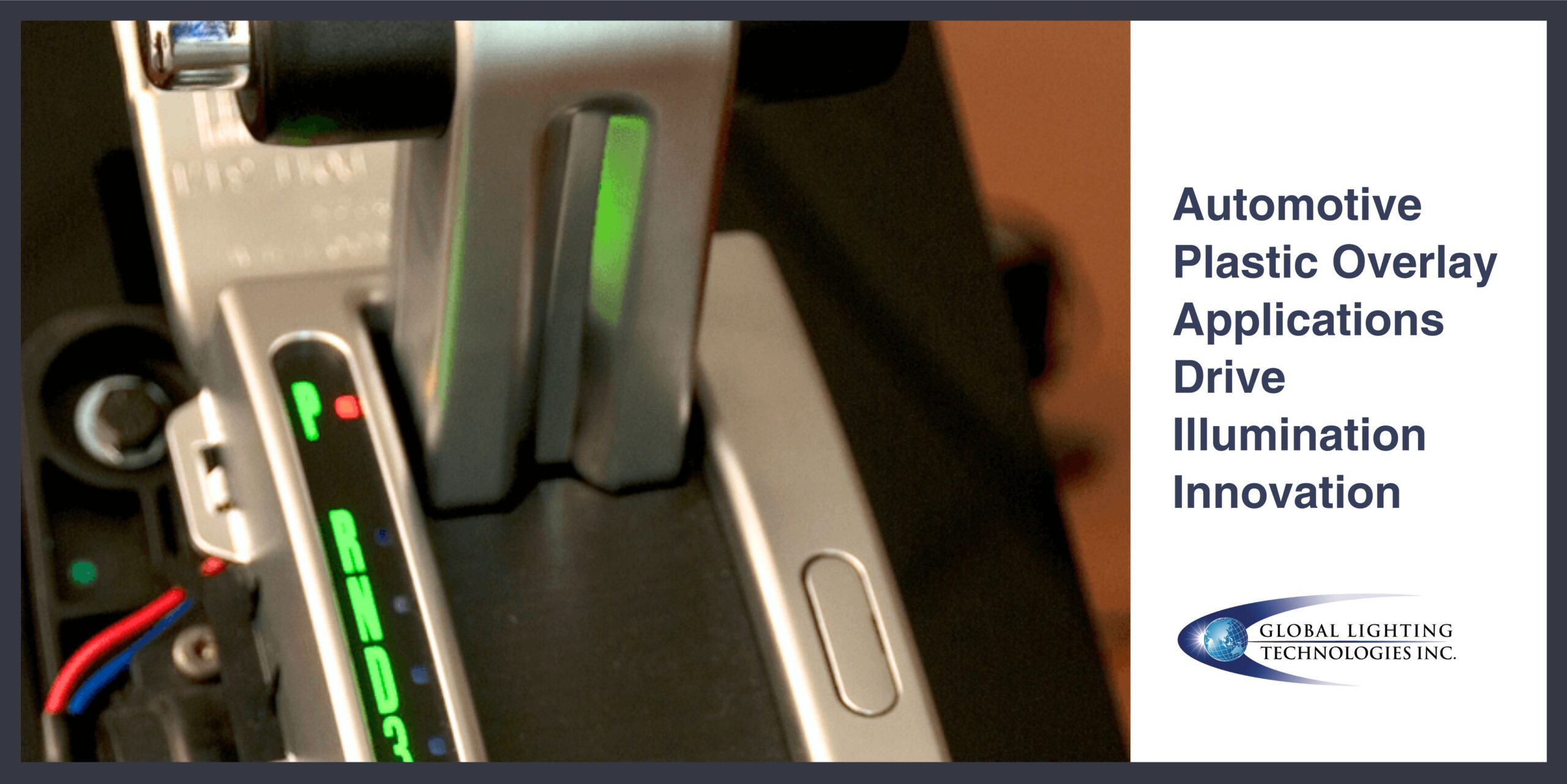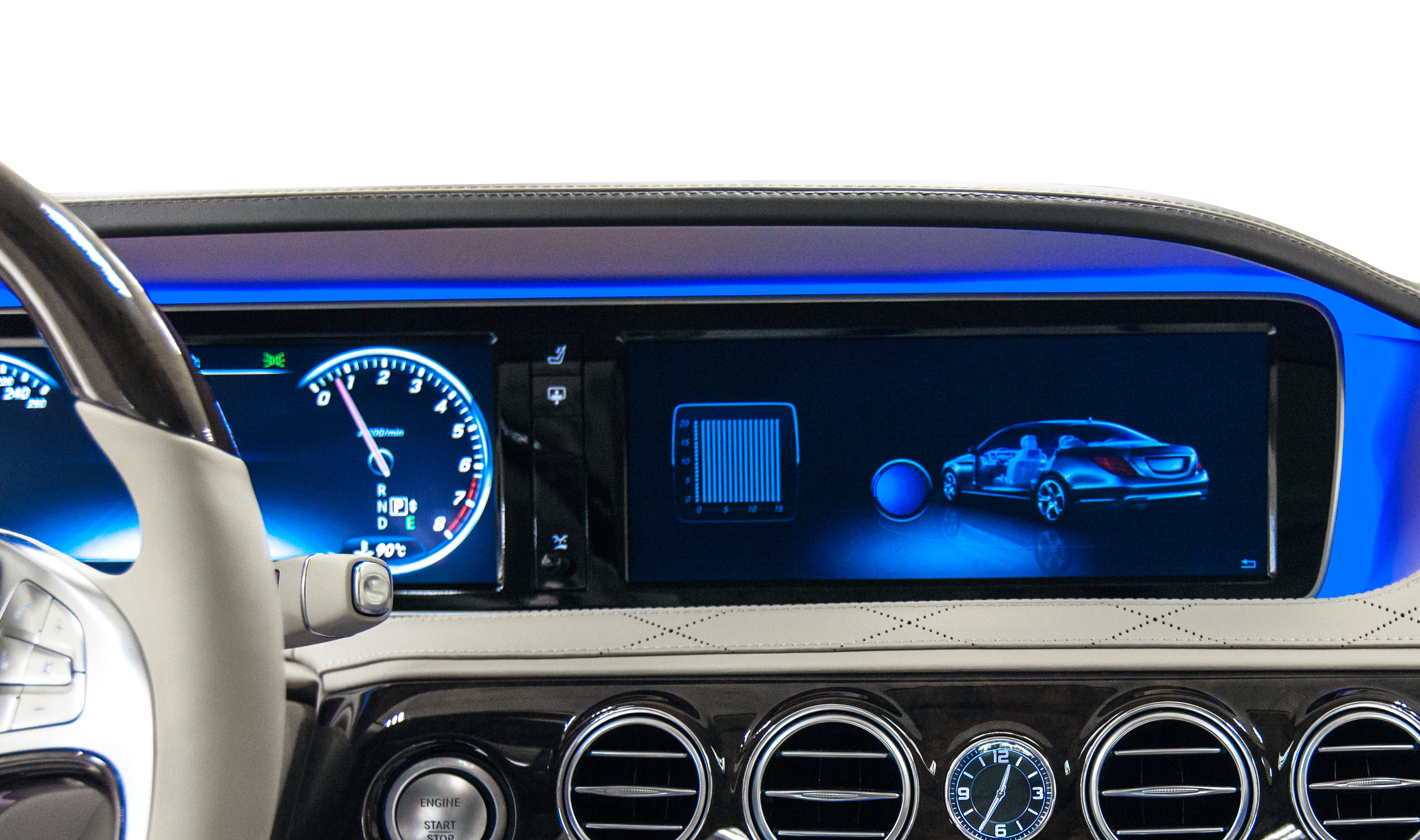
Creative Plastic Overlay Applications in Automotives with LED Lighting Technology
With the right LED lighting technology and skilled engineers, there are many ways to develop stunning, well-lit plastic overlays. Plastic overlays are essential components in automotive lighting, used to create the images or text that drivers and passengers see. These can include everything from logos or badges that display a car’s model to the buttons used to select gears or control functions.
Our engineering team has continually evolved our approach to address the newest innovations in the automotive market. Read on for our modern take on automotive applications.
What are Plastic Overlays and Their Benefits?
Plastic overlays in light guide applications are versatile components typically made from polycarbonate, polystyrene, and Acrylonitrile butadiene styrene (ABS). We work with plastic overlays for various controls, icons, and user interfaces to provide clear and illuminated indicators even in low-light conditions.
Though plastic overlays might appear inconsequential on the surface, they have many benefits once you look closer. Our automotive customers see the value in plastic overlays for these reasons:
Enhanced Visibility: The primary benefit of pairing a plastic overlay with LED lighting technology is improved visibility in low to no-light situations. This ensures that critical information and controls are clearly visible to the user.
Functionality: Illuminated overlays can provide functional benefits, such as indicating the status of vehicle systems like check engine lights. They can also highlight touch areas for seat heaters and environment system controls.
Aesthetic Appeal: Light guides can illuminate overlays to enhance the overall aesthetic appeal of the vehicle’s interior. There are many custom light guide designs to make vehicles more attractive and stand out.
Once our automotive customers design and source their plastic overlays, our engineering team is tasked with engineering the LED lighting technology to best illuminate these custom applications. Our specialized concentration in lighting design allows our team to bring focused leadership to each project, advising our customers on best-case solutions to their innovation challenges.
Now, let’s take a look at how LED lighting technology and plastic overlays team up in automotive applications.
Key Advancement: Touch and Force Sensor Plastic Overlay Applications
The latest advancements in plastic overlays include the integration of touch or force sensors. This innovation allows for seamless control interfaces on top surfaces, which eliminates the need for physical buttons or knobs. We’ve incorporated this technology into modern vehicles for a sleek, streamlined look and enhanced user experience!
Integrated controls create touch areas for turning on seat heaters, HVAC systems, and other controls. They can also be illuminated to show warnings like check engine lights. Newer overlays work with touch or force sensors, allowing controls to be integrated into the top surface, eliminating the need for individual buttons or knobs.

Backlighting: How We Pair LED Lighting Technology With Enhanced Plastic Overlays for Automotive Applications
Backlighting enhances illumination both inside and outside of a vehicle. The term “backlight” is often used loosely across the industry to define various light sources in a vehicle. We define true backlights as those that illuminate a surface from behind, creating a soft glow. Commonly, these are found in the dashboard and center console, as well as various ambient lighting applications. Our engineers specialize in backlight solutions that bring out the benefits of plastic overlays in both functional and aesthetic ways.
LED-based edge-lit backlighting is becoming more advanced and specific to plastic overlays as applications expand. The ultra-thin plastic light guide provides backlighting to illuminate buttons and switches. It also adds decorative elements to the vehicle’s cabin and exterior. Our engineers note that LED-based edge-lit backlighting is often more energy-efficient than direct LED illumination, which saves power, especially in electric cars.
The Future of Plastic Overlays and LED Lighting Technology in Automotives
Plastic overlays can transform automotive lighting applications by enhancing both functionality and aesthetics. From door sill plates to decorative panels to touch sensor integration, the future of plastic overlays looks bright! Automotive manufacturers can trust Global Lighting Technologies to help them stay ahead of advancements in vehicle lighting.
Let’s discuss your latest innovation. Connect with us to drive your ideas forward.
Learn more about how our technology meets the future of lighting.